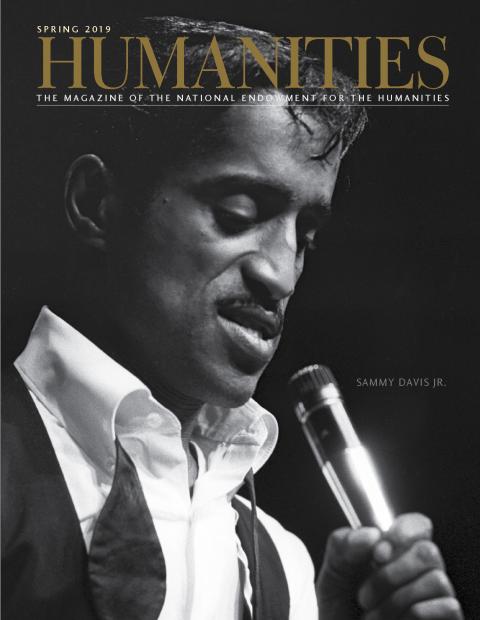History is not one thing. It is many—a stage crowded with famous names and a multitude of lesser-known players.
Sammy Davis Jr. was certainly well known. Dancer, comedian, actor, star of stage and screen, he knew the highs of celebrity and the lows of public disapproval, as author Laurence Maslon points out. A great supporter of the civil rights movement, Davis thought the world of Martin Luther King Jr. but lost face by embracing Richard Nixon.
Debra Hess Norris is not a famous name, but very likely at some point you have stood in a museum gazing in wonder at an artifact—the Declaration of Independence, the Star-Spangled Banner, C-3PO from Star Wars—that had been conserved by someone she trained. A profile of this influential photo conservator shows us how she operates.
Possibly the most famous woman of early America was Pocahontas, whose life crossed languages and cultures in a still-dazzling drama of politics and survival. But, as historian Sarah Pearsall reminds us, Pocahontas was hardly the only woman to leave a mark on the era. Historians, in recent years especially, have brought to the fore a stunning array of women, not just pilgrims or witches but deputy husbands, nasty wenches, divorcees, and even a murderess.
John Dewey may be the most famous name in modern education theory that no one reads. Famous, influential, and yet forgotten at the same time. Peter Gibbon writes about the American philosopher whose intellectual influence in the first quarter of the twentieth century was unequalled.
Fame itself assumed a new form with the rise of movie theaters, which, in addition to running dramas and comedies, were a source of news and ephemera. Leah Weinryb Grohsgal examines an NEH-supported project to conserve Movietone reels of major events and the kind of stories that only get told on slow news days.
Gouverneur Morris is not entirely well remembered despite many important contributions to the story of our nation’s founding. Fortunately, in yet another example of how NEH helps conserve our culture and traditions, Morris’s diaries have been transcribed, edited, annotated, and published. To commemorate this achievement, we interview Melanie Randolph Miller, the editor of the series.

